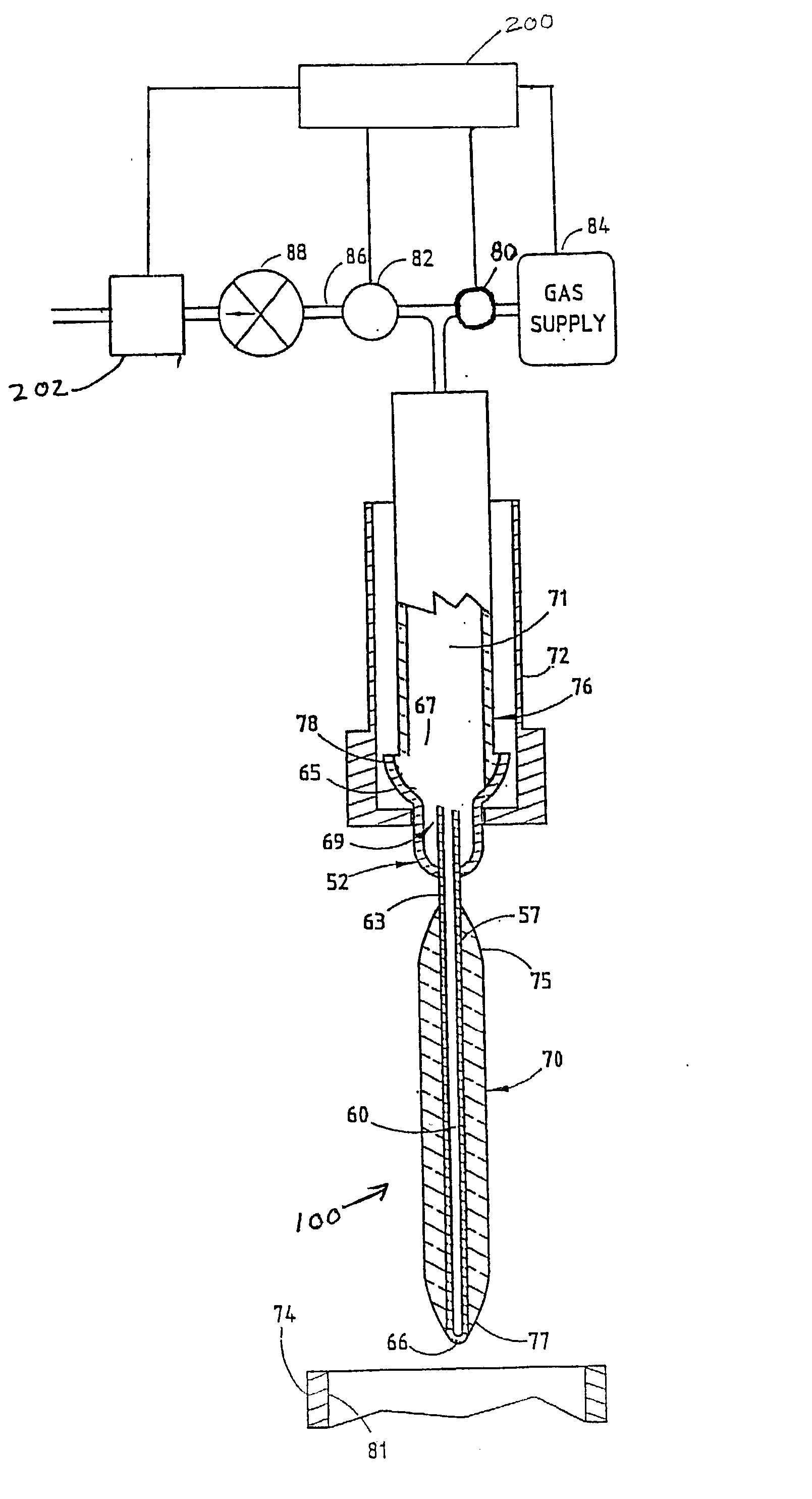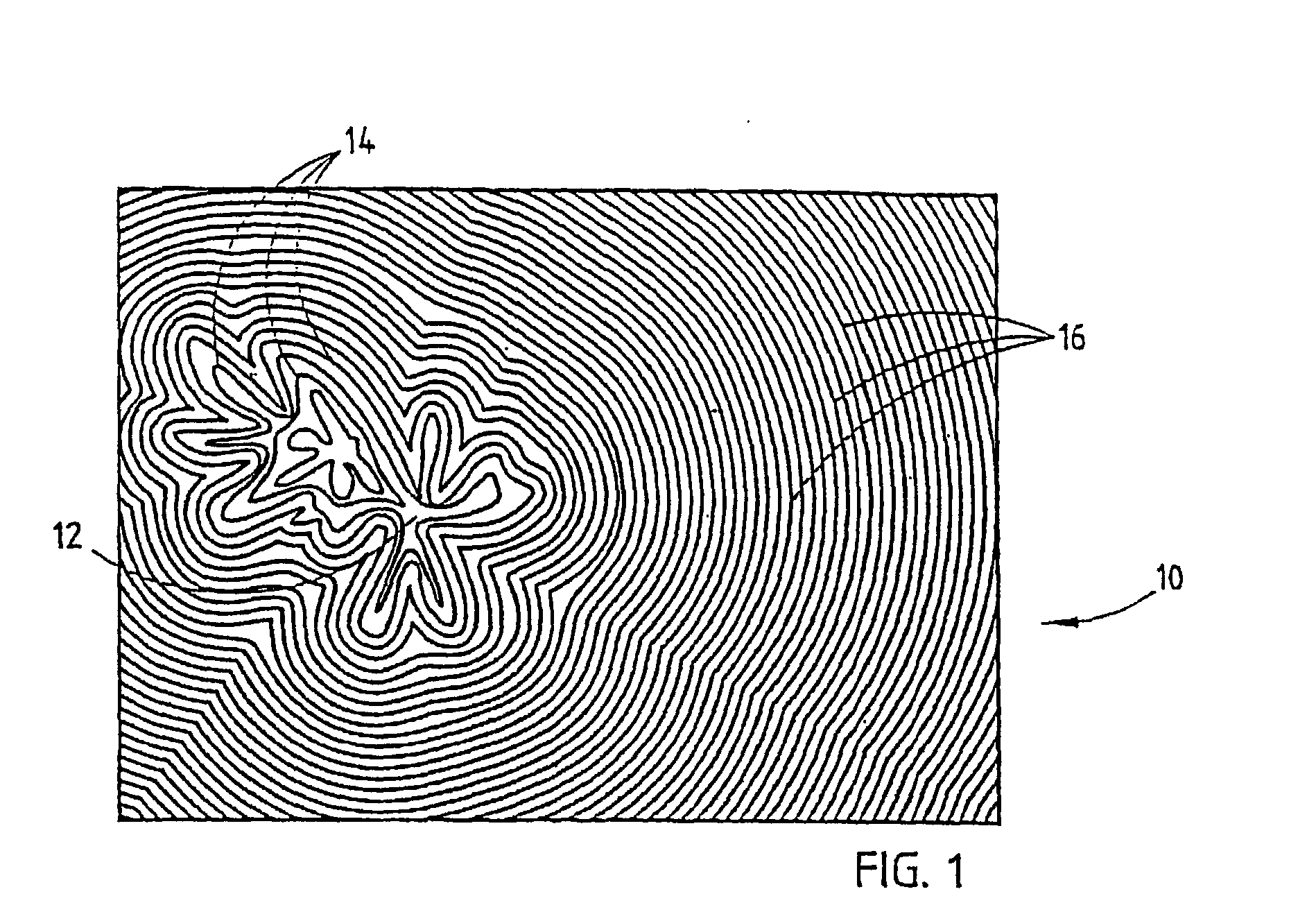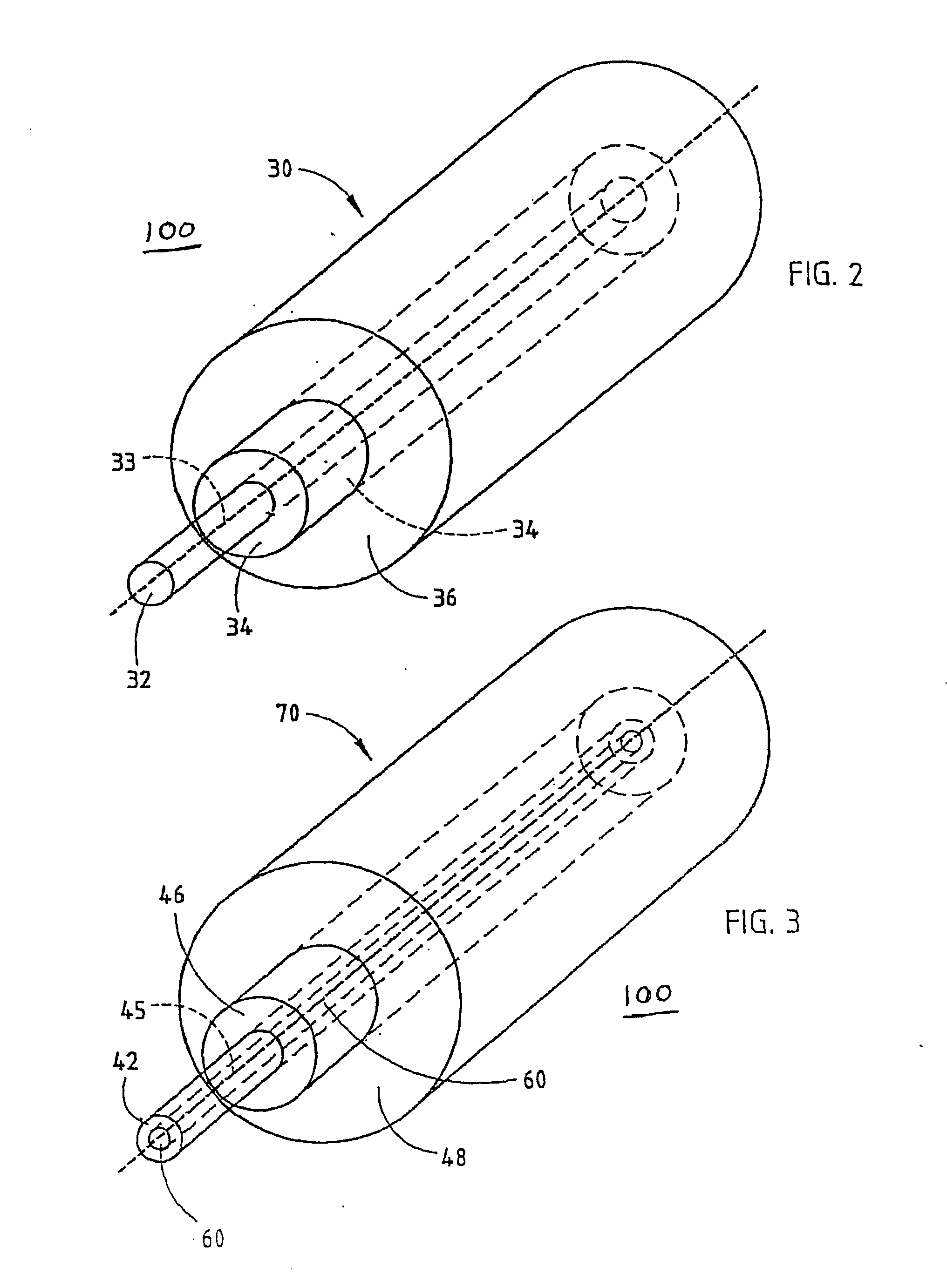Method for fabricating a low polarization mode dispersion optical fiber
a technology low polarization mode, which is applied in the field of optical waveguide fibers, can solve the problems of insufficient closing or collapsing of holes, insufficient pulling or pulling on the preform without the assistance of vacuum, and difficulty in using a relatively strong vacuum to close the centerline and other apertures of glass core blanks or other optical fiber preforms, etc., and achieves the effect of reducing the number of optical fibers, reducing the number of optical pm
- Summary
- Abstract
- Description
- Claims
- Application Information
AI Technical Summary
Problems solved by technology
Method used
Image
Examples
Embodiment Construction
[0133] FIG. 13 depicts the refractive index profile of the central portion of an fiber, and / or its preform, which was formed from a soot preform originally deposited on a 9.5 mm (3 / 8 inch) diameter bait rod. The preform and subsequently drawn fiber comprised germania doped silica and contained no fluorine. The effective area of the drawn optical fiber was greater than about 60 square microns. As seen in the refractive index profile of FIG. 13, the optical fiber has a central core region extending from the centerline to about 3.5 microns, a first annular region adjacent and surrounding the central core region and having a delta % (.DELTA.%) greater than or equal to 0 and less than about 0.2%, more preferably less than about 0.1%, and a second annular region or ring adjacent and surrounding the first annular region and extending from a radius of about 5 microns to about 10 microns. Cladding material is adjacent and surrounding the second annular region, i.e. starting at about 10 micro...
PUM
| Property | Measurement | Unit |
|---|---|---|
| temperature | aaaaa | aaaaa |
| temperature | aaaaa | aaaaa |
| temperature | aaaaa | aaaaa |
Abstract
Description
Claims
Application Information
 Login to View More
Login to View More - R&D
- Intellectual Property
- Life Sciences
- Materials
- Tech Scout
- Unparalleled Data Quality
- Higher Quality Content
- 60% Fewer Hallucinations
Browse by: Latest US Patents, China's latest patents, Technical Efficacy Thesaurus, Application Domain, Technology Topic, Popular Technical Reports.
© 2025 PatSnap. All rights reserved.Legal|Privacy policy|Modern Slavery Act Transparency Statement|Sitemap|About US| Contact US: help@patsnap.com



